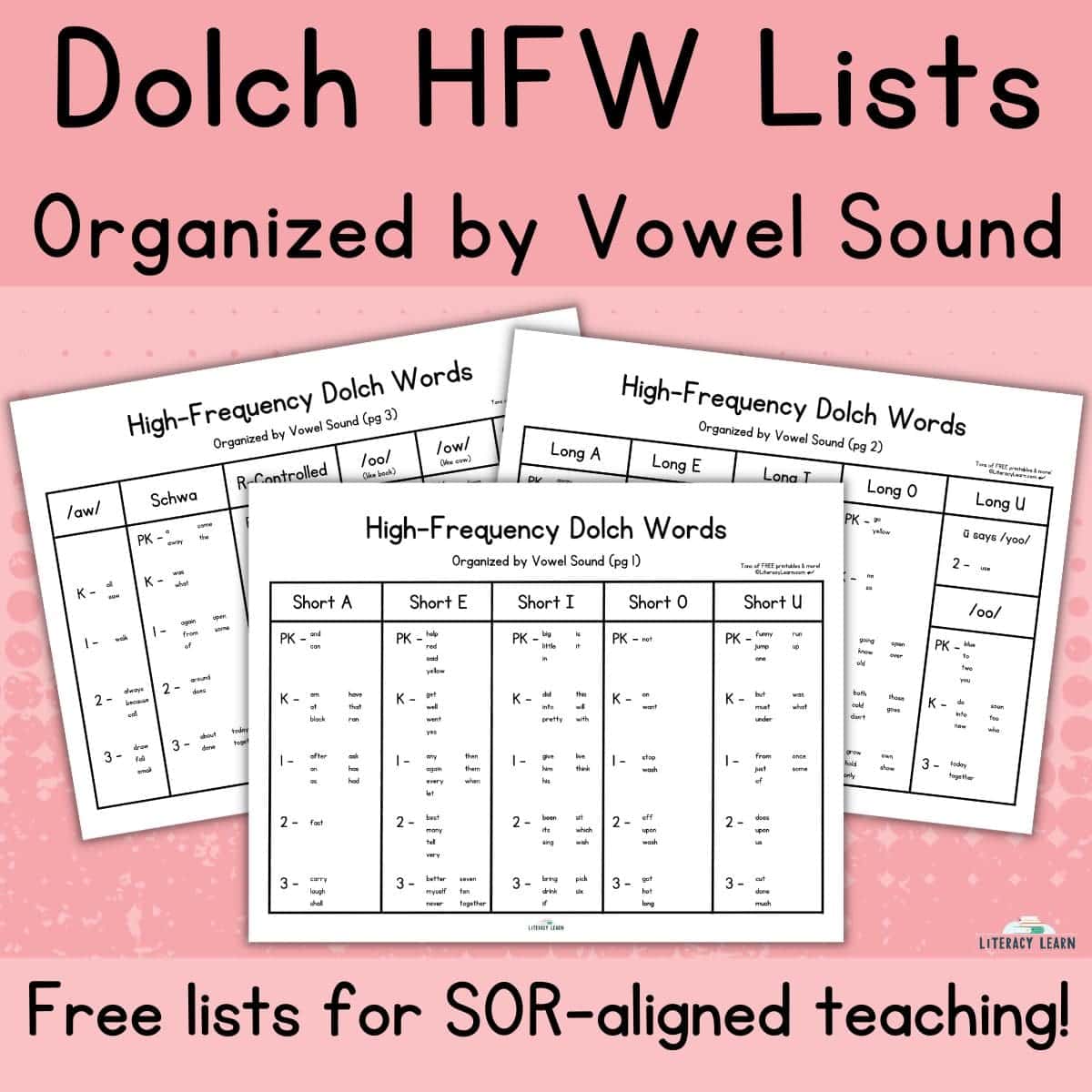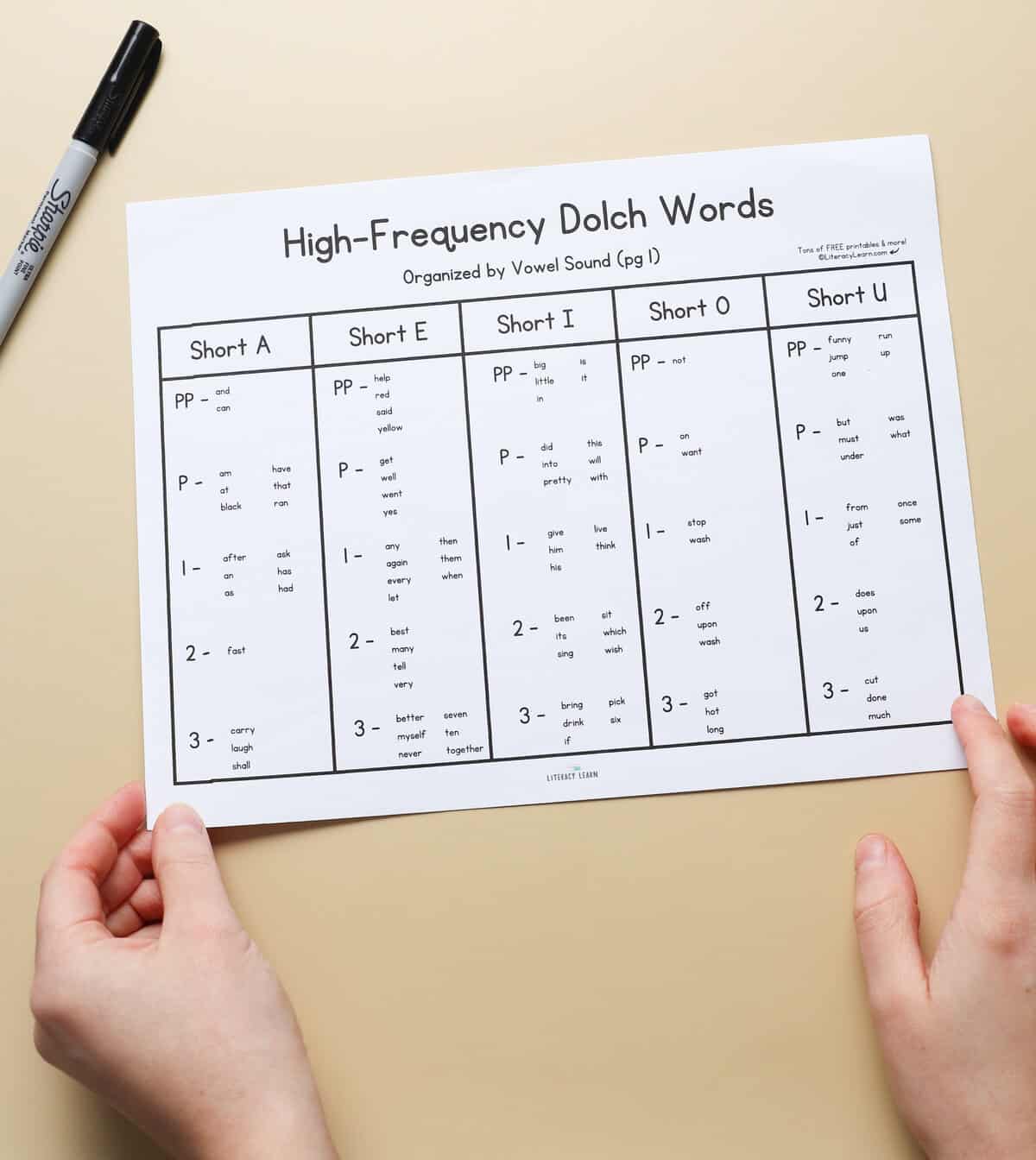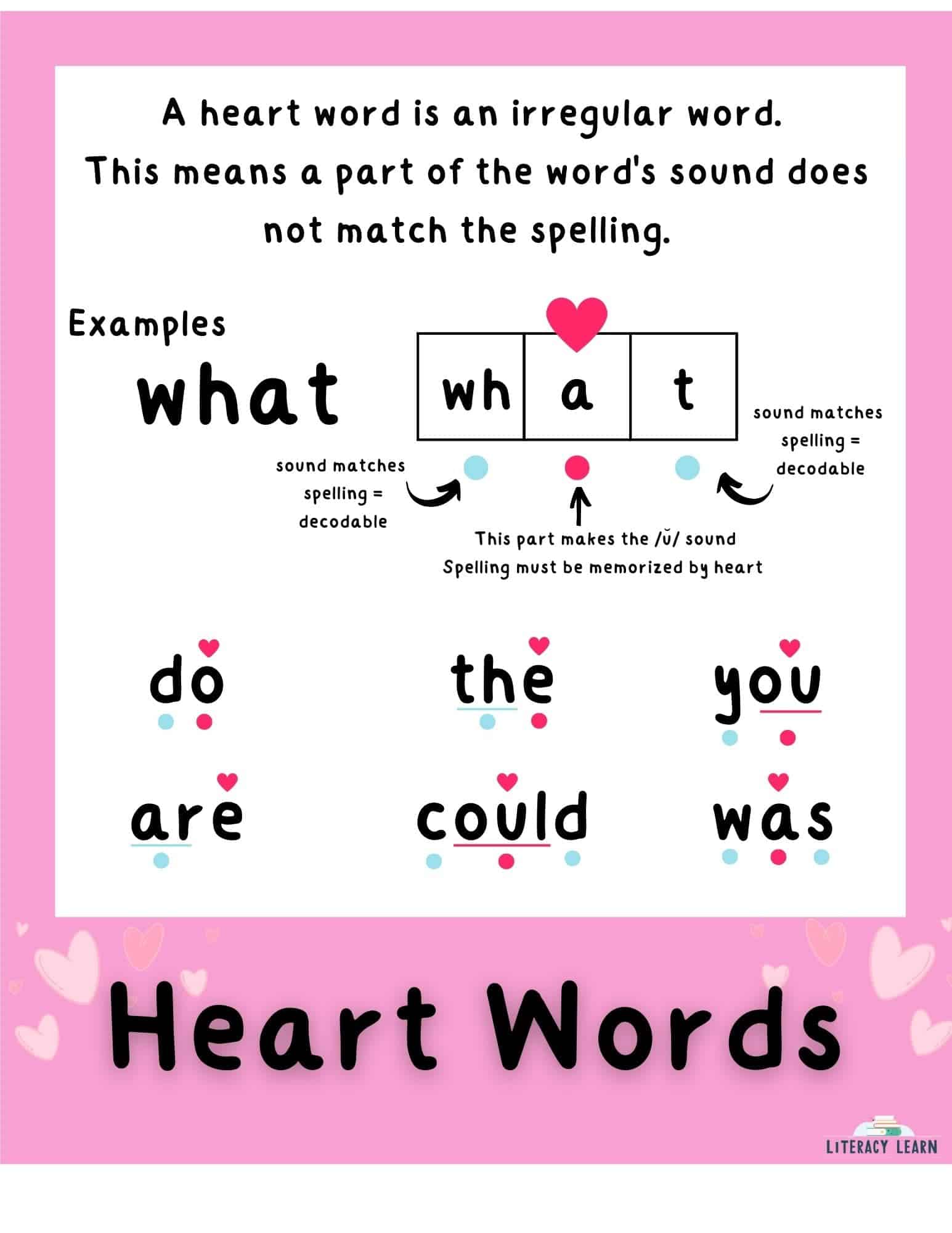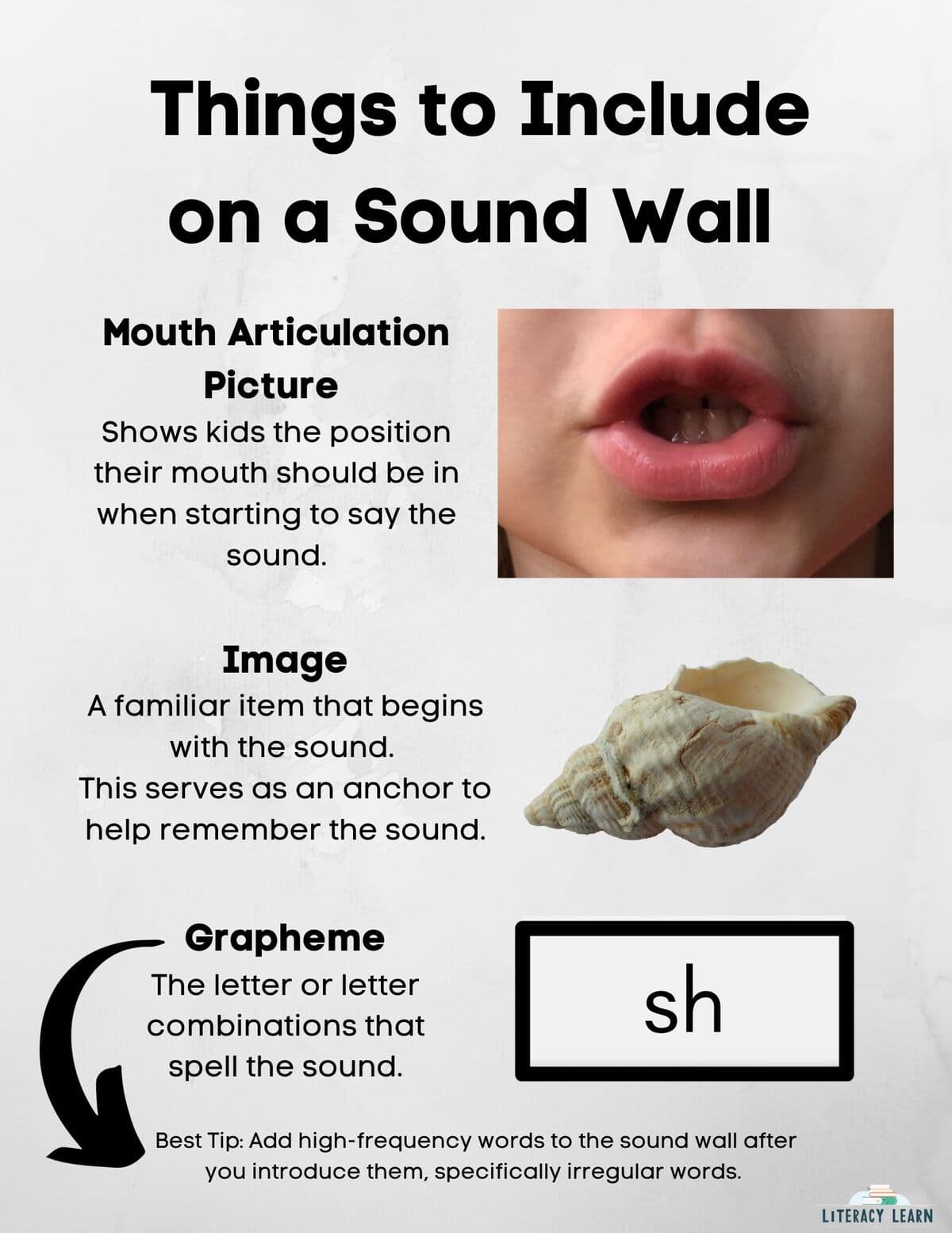3 Free Dolch HFW Lists by Vowel Sound (SOR-aligned)
This post may contain affiliate links. As an Amazon affiliate, we earn from qualifying purchases.
Learn research-backed ways to teach sight words and get 3 FREE lists with all 220 Dolch words organized by vowel sound. This Science of Reading-aligned resource makes it easy to teach High Frequency Words based on similar sounds and features.

📃 What Are Dolch Sight Words?
Edward Dolch was an educator from the 1930’s who analyzed many children’s books. He eventually developed a list of the most commonly used words in those texts and asserted that children should memorize these words to be successful readers.
This list is known as the “Dolch Word List,” and it includes 220 words in total.
Because our young readers are likely to encounter these words over and over again in the books they read, it just makes sense to ensure that kids are familiar with them.
Instantly knowing these common words makes reading less laborious and helps kids feel successful as readers.
👎🏽 The Problem with Memorization
Dolch was a proponent of the “Whole Word” method for teaching reading, and the Dolch list became incredibly popular with educators as the movement took off.
For many decades, well-intentioned teachers have been using this list to drive their instruction by having kids memorize all 220 words on this list. However, research has definitively proven that the brain does not learn to read by memorizing words as whole units.
Research using fMRI’s definitively shows that the brain learns new words through the process of orthographic mapping, where we connect sounds to letters.
Once this happens enough, automatic pathways are created and the word can be recognized and read instantly. These are what we call true “sight words,” the words we have memorized by sight.
So, as educators, we need to re-think the ways we teach high-frequency words, the most commonly encountered words that Dolch compiled in his list.
❌ BUT… We don’t want to teach them as whole words to be memorized. So how do we best teach these high-frequency words?
👍🏽 The Solution
There is good news for educators and kids alike! Many of the words on this list are decodable!
So instead of memorizing words as whole units, we can encourage kids to match the letters they see to the sounds they hear and decode the words.
Going through this process will help turn unknown words into sight words.
With my students, I’ve found the most effective way to integrate teaching high-frequency words and explicit phonics instruction is to group similar words by sounds.
That’s why we created organized Dolch words lists! We went through each word and organized them according to the vowel sounds heard in the words, as well as the particular list they belong to: Pre-Primer, Primer, 1, 2, 3.

Using Dolch Word Lists
These words can be used for both assessment and explicit teaching for reading AND spelling.
Assessment:
We suggest assessing students to see which words they can read. If kids don’t instantly recognize words that are fully decodable given the phonics concepts that have been taught, then give them practice!
Provide kids with authentic practice mapping these words. No ‘memorizing’ is needed. Remember, practice makes permanent!
- Grab our 7 free high-frequency words poems for authentic decoding practice!
- For more fun practice that includes some comprehension, get our free Dolch HFW game which focuses on the Primer list.
Explicit Instruction:
Use the list to provide targeted instruction based on vowel sound and/or phonograms you’re currently teaching. This type of instruction isn’t random. Instead, it gives kids the ability to make connections between words with similar sounds and/or spellings.
For words that are irregular or include irregular parts, we recommend using the heart word method.
Even if there are irregular parts to a word, some portions are still perfectly decodable. Just look at the examples in the graphic below. ⬇️

In his book, Equipped for Reading Success, David Kilpatrick supports this idea. He affirms that the brain learns to store words by attending to letter-sound correspondences.
So the ‘regular’ parts within a word should be pointed out to help anchor the word, and the one or two phonemes that are irregular will need to be memorized. Here’s more good news: Most words only have one irregular part!
- Learn more about teaching heart words and get some free resources for teaching words with irregular parts.
- After explicit instruction introducing the words, including the irregular parts, kids should practice mapping the words and memorizing the irregular parts “by heart.” To practice this, use our free orthographic mapping worksheets.
- For more practice, check out our popular Sound Box Bundle from our TPT shop.
We also suggest using this Dolch Word resource to help you connect to your sound wall instruction. When teaching certain sounds, you may place notecards or sticky notes with the words under each ‘phoneme’ card.
Including high-frequency words is a great scaffold to help kids during their independent work time.

💜 Why You’ll Love It
We love this 3-page resource for a variety of reasons:
- The lists are organized by speech sounds (phonology), grade level, and vowel sounds.
- The format helps teachers quickly choose the words that connect to the sounds or patterns being taught.
- Teaching words this way promotes connections between words with similar sounds and/or spellings. For example, when teaching y as a vowel, you can quickly locate the HFW words ending with y that represent the long ī sound (fly, by, why).
- The attention to the sound will help to ‘anchor’ the word in the brain. This aligns with current research that shows literacy levels increase when students make connections to the sounds and patterns within High Frequency Words.
Download & Print
DOWNLOAD TERMS: All of our resources and printables are designed for personal use only in homes and classrooms. Each teacher must download his or her own copy. You may not: Save our files to a shared drive, reproduce our resources on the web, or make photocopies for anyone besides your own students. To share with others, please use the social share links provided or distribute the link to the blog post so others can download their own copies. Your support in this allows us to keep making free resources for everyone! Please see our Creative Credits page for information about the licensed clipart we use. If you have any questions or concerns regarding our terms, please email us. Thank you!
👉 Get more printables: 50+ pages of phonics word lists.



Thanks
Hi Estie,
You are welcome! Hope this helps you teach your students HFW.
Katie and Laura